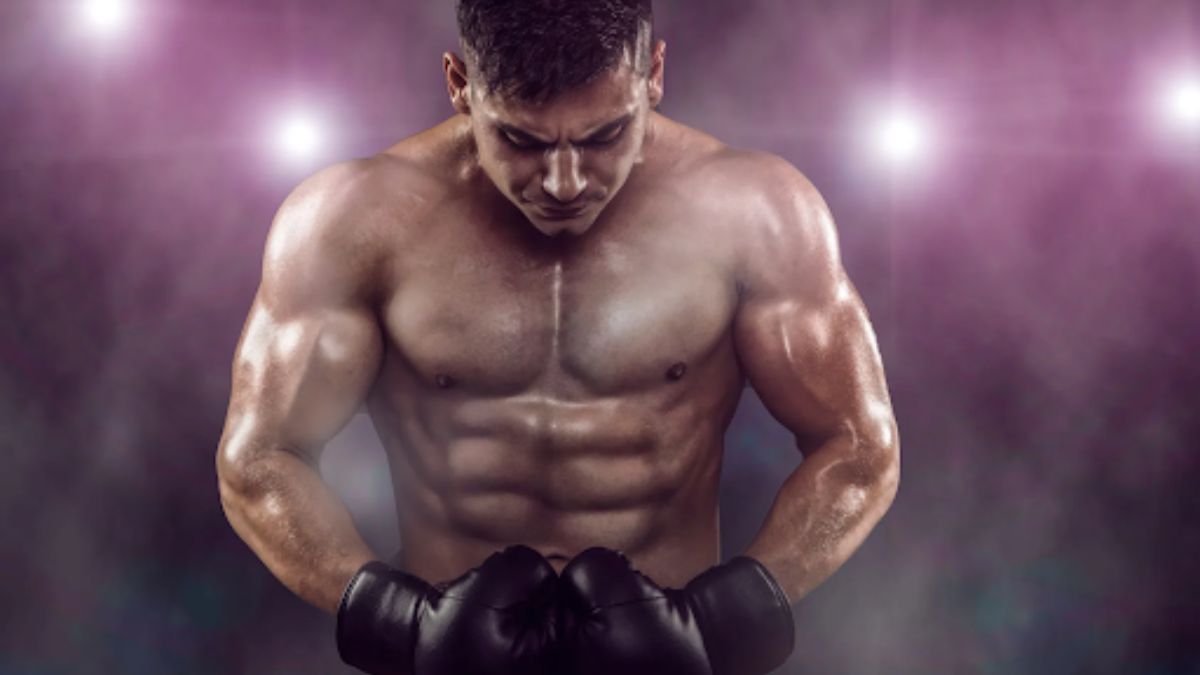HEALTH
Training Like a Boxer: A Comprehensive Guide

Training like a boxer requires a combination of strength, endurance, agility, and mental fortitude. Unlike other sports, boxing demands full-body conditioning to develop power, speed, and stamina, along with sharp reflexes and quick decision-making. Whether you’re training for a match or looking to adopt a boxer’s training regimen, this guide will provide you with the tools to maximize your fitness potential.
Overview: Key Elements of Boxing Training
Boxing training is structured around three key physical elements:
- Strength: Boxers must generate explosive power, particularly in their upper body and core, to deliver strong punches and maintain defensive stability.
- Endurance: Boxing rounds are intense, lasting three minutes with minimal rest. Endurance is crucial for sustaining high-level performance throughout multiple rounds.
- Agility: Footwork and quick, fluid movements are essential in boxing for both attacking and evading opponents. A boxer’s reach is very important, so the smaller the height and reach of a boxer is, the lighter they are likely to be on their feet. If you are curious to know more about the reach of certain boxers, for example Tommy Fury, Northamptonshire News has an extensive article on the topic.
Conditioning and Cardio
Conditioning and cardiovascular endurance are fundamental to a boxer’s training routine. Boxing is a high-intensity sport, and a fighter’s cardiovascular system must be highly developed to sustain energy output across an entire match. Cardio exercises simulate the quick bursts of activity and short rest periods boxers experience in the ring.
High-Intensity Interval Training (HIIT) for Cardiovascular Endurance
HIIT (High-Intensity Interval Training) is one of the most effective ways to build a boxer’s cardiovascular endurance. Research shows that HIIT can burn up to 30% more calories than other forms of exercise in the same amount of time . HIIT mimics the energy bursts in boxing rounds and improves both anaerobic and aerobic systems, crucial for delivering power punches and maintaining speed.
HIIT Workout Example:
- 30 seconds of all-out effort (sprinting, burpees, or shadowboxing)
- 30 seconds of rest or light movement
- Repeat for 10-20 minutes, depending on fitness level.
Jump Rope: A Staple in Every Boxer’s Routine
Jump rope is synonymous with boxing. It’s an efficient workout for building endurance, improving coordination, and enhancing footwork, all vital for success in the ring. Studies show that jumping rope for 10 minutes can have the same cardiovascular benefits as 30 minutes of jogging .
Key Benefits of Jump Rope for Boxers:
- Improves footwork and agility: Essential for quick movement around the ring.
- Enhances coordination: Timing and rhythm developed from jumping rope translate into better timing for punches.
- Burns calories: Jumping rope can burn up to 13 calories per minute .
Running: Incorporating Long-Distance and Sprint Sessions
Running is another critical component of boxing training, helping to build both aerobic and anaerobic capacity. Boxers typically include a mix of long-distance running and sprints in their training programs to enhance endurance and explosiveness.
- Long-Distance Running: Helps improve a boxer’s aerobic base, allowing them to sustain energy during long, intense bouts.
- Suggested duration: 3-5 miles, 2-3 times per week.
- Sprint Intervals: Builds explosive power and simulates the short, intense bursts required during a fight.
- Suggested workout: 100-meter sprints followed by 30-60 seconds of rest, repeated for 8-10 sets.
Strength and Resistance Training
Strength training is essential for generating power and resilience in boxing, but boxers must be careful not to build excessive bulk, which can reduce agility. The focus is on functional strength that supports efficient, powerful movement.
Bodyweight Exercises
Boxers rely heavily on bodyweight exercises to develop lean muscle mass, balance, and functional strength. These exercises ensure that every muscle works synergistically, improving overall body control and reducing the risk of injury.
Key Bodyweight Exercises for Boxers:
- Push-Ups: Builds upper body strength, particularly in the chest, shoulders, and triceps.
- Pull-Ups: Strengthens the back and biceps, crucial for powerful punches.
- Squats and Lunges: Develop lower body strength and balance, important for a stable stance and powerful footwork.
- Planks: Build core stability, which is vital for overall body strength and punch power.
Resistance Bands and Light Weights
Using resistance bands and light weights is an excellent way for boxers to build strength without adding unnecessary muscle mass. This method emphasizes speed-strength and muscular endurance, allowing boxers to maintain a high work rate throughout their training and fights.
Benefits of Resistance Band Training:
- Increases punch speed and power by training muscles through the entire range of motion.
- Improves muscular endurance, helping boxers to maintain power in later rounds.
Key Exercises with Resistance Bands and Light Weights:
- Shadowboxing with light dumbbells or resistance bands to enhance punch speed.
- Resistance band squats and lateral movements to improve leg strength and agility.
Core Work: The Importance of a Strong Core in Boxing
A boxer’s core is the foundation for balance, power, and defense. A strong core helps absorb blows and delivers powerful punches by transferring energy from the legs through to the upper body.
Top Core Exercises for Boxers:
- Russian Twists: Enhances rotational power, essential for throwing punches.
- Medicine Ball Slams: Builds explosive power and mimics punch movements.
- Leg Raises: Strengthens the lower abdominal muscles and improves core stability.
Boxing-Specific Drills
Boxing-specific drills are critical for developing the technique, agility, and reflexes necessary for ring success, according to the BBC. These drills not only improve physical conditioning but also sharpen the mental focus and coordination required for high-level performance.
Shadowboxing: Technique and Agility
Shadowboxing is a key training method that focuses on perfecting technique, footwork, and head movement. It allows boxers to visualize fights, practice combinations, and develop rhythm without the physical strain of hitting a bag or sparring.
Benefits of Shadowboxing:
- Improves footwork and agility.
- Refines punching technique and hand-eye coordination.
- Burns calories while enhancing speed and endurance.
Heavy Bag Work: Power and Endurance
The heavy bag is a staple in boxing gyms and is used to develop power, endurance, and accuracy. Hitting the heavy bag mimics the resistance of a real opponent, allowing boxers to practice punch combinations with full power.
Heavy Bag Workout Tips:
- Focus on combination punches, mixing jabs, crosses, hooks, and uppercuts.
- Practice defensive movements like slipping and ducking between punches.
- Incorporate rounds: 3 minutes of hitting, followed by 1-minute rest, to simulate fight conditions.
Sparring: Strategy and Real-Time Reflexes
Sparring is where boxers put their skills to the test in a controlled environment. It’s essential for developing timing, strategy, and real-time reflexes. Sparring sessions allow fighters to practice offensive and defensive tactics while reacting to an opponent’s movements in real-time.
Key Sparring Strategies:
- Focus on footwork and staying balanced.
- Practice counter-punching to exploit openings.
- Use head movement and defensive maneuvers to avoid punches while maintaining offensive pressure.
Conclusion
Boxing training is a holistic regimen that builds strength, endurance, agility, and mental toughness. By combining conditioning, strength training, and boxing-specific drills, you can train like a professional fighter and improve both your physical and mental performance. For more tips and strategies, check out expert resources from The Guardian on the benefits of sports training.
HEALTH
Expert Plastic Surgeons Transforming Beauty and Confidence

Looking good often leads to feeling good. Many people choose plastic surgery to enhance their beauty and boost their self-esteem.
But choosing the right plastic surgeons are not easy. It requires careful research and consideration. This article will guide you through important tips to help you find an expert plastic surgeon who can transform your appearance and improve your confidence.
Check the Surgeon’s Credentials
The first step in finding an expert plastic surgeon is to check their credentials. Make sure the surgeon is board-certified by a recognized medical board.
Certification proves that the doctor has the right training and skills to perform plastic surgery safely. You can visit medical board websites to verify their license and check for any past complaints or issues.
Look at Before and After Photos
A good way to measure a plastic surgeon’s skill is by looking at their previous work. Most surgeons have photo galleries of past patients who have had similar procedures. Study these photos closely.
Look at the changes made, the natural look of the results, and whether the outcomes meet your expectations. These photos can give you a clear idea of the surgeon’s ability to enhance beauty while maintaining a natural appearance.
Read Patient Reviews and Testimonials
Reading what past patients say can help you decide if a surgeon is right for you. Look for reviews on websites, social media, and clinic pages. Positive reviews often highlight the surgeon’s skill, bedside manner, and how well they handle questions and concerns.
Be cautious of any surgeon who has many negative reviews or no reviews at all. Honest feedback from other patients gives you insight into the overall experience and satisfaction rate.
Consult and Ask the Right Questions
Booking a consultation is an important step in the decision-making process. During your consultation, ask about the procedure, the risks, the recovery time, and what results to expect. It is also a good time to see if you feel comfortable with the surgeon.
Good surgeons are patient, informative, and honest. They should not pressure you or make unrealistic promises. Also, ask if they offer non-invasive body treatments, especially if you are looking for options with shorter recovery times and less risk.
Consider the Clinic’s Facility and Staff
An expert surgeon should operate in a clean, accredited clinic or hospital. Make sure the facility meets safety standards and has modern equipment. Friendly and professional staff also make a big difference in your experience.
They help with scheduling, follow-ups, and answering questions. A well-organized and supportive team reflects a high level of care and professionalism from the surgeon and clinic.
All About Expert Plastic Surgeons
Choosing the right plastic surgeon is a big decision. Your safety, beauty, and confidence are at stake, so take your time and do the necessary research. Check credentials, review past work, read patient reviews, ask questions, and visit the facility.
These steps will help you find an expert who can deliver natural, beautiful results and improve your self-confidence. With the right surgeon, your journey to enhancing your appearance will be safe, smooth, and satisfying.
Looking for more tips and ideas? We’ve got you covered. Check out some of our other posts now.
HEALTH
What You’ll Learn in CPR & First Aid Training Courses

Have you ever wondered what you would do if someone collapsed in front of you or had a serious injury? It’s a scary thought, but being prepared makes a huge difference. CPR & First Aid training courses teach you exactly how to handle emergencies like this.
In this blog post, you’ll discover what skills you’ll learn, how these courses work, and why this training is so important. By the end, you’ll feel ready to take the next step toward saving lives.
Learn to Act Fast in Emergencies
One of the first things you’ll learn in CPR & First Aid training is how to stay calm when an emergency happens. These courses show you how to think clearly and take action when seconds matter. Whether someone has trouble breathing, is bleeding badly, or has passed out, knowing what to do right away can help save their life.
You’ll learn how to assess the situation, check for danger, and start helping before professionals arrive. These steps can make all the difference.
Discover the Power of CPR
CPR stands for Cardiopulmonary Resuscitation. It sounds complicated, but you’ll learn that it’s easy to do. CPR is a method used when a person’s heart stops beating.
You’ll find out how to push down on the chest in a steady rhythm and how to give breaths if needed. These actions help move oxygen through the body until help comes. CPR is a lifesaving skill, and anyone can do it once they are trained.
Understand How to Use an AED
An AED is a device that gives a shock to the heart to help it start beating again. During your training, you’ll learn how to use it step by step. The machine talks to you and tells you what to do, which makes it easier.
You’ll also learn where to find AEDs in public places and why quick use is so important. Using an AED right away can increase a person’s chances of survival, and you’ll be ready to do just that.
Learn to Handle Common Injuries
Every day, accidents happen all the time. Someone might cut themselves, fall, or have a burn. In CPR & First Aid training, you’ll learn how to help with these injuries.
You’ll find out how to clean and cover a wound, treat a burn, or wrap a sprain. You’ll also learn what not to do so you don’t make things worse. Knowing how to give the right care right away helps someone feel better and heal faster.
Be Ready for Choking and Allergic Reactions
Choking is another emergency that can happen suddenly. These courses show you how to spot the signs and what to do to help. You’ll learn how to perform back blows and the Heimlich method.
Allergic reactions can also be dangerous. You’ll learn how to use an epinephrine auto-injector and how to help the person stay safe until help comes. These are real situations that anyone could face, and now you’ll know what to do.
If you’re curious about even more topics covered in these lessons, get more info by visiting your local training center or health organization.
First Aid Training: The Power to Save Lives
Taking CPR & First Aid training courses gives you the skills to help others during some of life’s scariest moments. You don’t need to be a doctor or nurse. Just knowing what to do during an emergency can save lives.
These courses help prepare you for real-life emergencies in a simple, hands-on way. Did this guide help you? Browse the rest of this section for more advice on a variety of topics.
HEALTH
The Role of Community in Veteran Health and Wellness

Did you know that a strong community connection can play a transformative role in the health and wellness of our veterans? In recent years, studies have shown that social integration significantly boosts mental health and overall well-being, especially for those who have served in the military.
Veterans often face unique challenges, and having a supportive community can be a crucial factor in their recovery and sustained health. This article explores the vital importance of a community in veteran health and how senior living options can enhance their overall quality of life. Keep on reading.
The Importance of Community in Veteran Well-Being
For veterans transitioning back into civilian life, the shift can often feel overwhelming. Many struggle with feelings of isolation and alienation from those who haven’t shared similar experiences. This is where a sense of community becomes essential.
A supportive network helps veterans feel connected and valued. In senior living environments, fostering a community spirit can lead to:
A Sense of Belonging
Veterans often feel better when they know others share their past. Living with peers who understand can make them feel safe. This helps build real friendships and trust.
Improved Mental Health
Being around others can ease sad or anxious thoughts. Talking, laughing, and sharing stories helps the mind. These small moments lift spirits each day.
Physical Health Benefits
Group activities like walks or games keep the body moving. Staying active with others can be more fun. It helps veterans stay strong and feel better.
Easy Access to Resources
A strong group can guide members to helpful tools. It’s easier to ask for help when others understand. Veterans find what they need without feeling lost.
How Senior Living Enhances Social Connections
Many places where seniors live are made to feel like a strong community. Some have special programs just for veterans. These programs help them feel supported and connected with others.
There are group trips, fitness classes, and other fun things planned for veterans. These keep them busy, happy, and moving. It also helps them meet people who understand them.
Some places also give extra care for mental health. Veterans can talk to people who know about things like PTSD. Being around others with similar stories can help them feel less alone.
Building Supportive Care Frameworks
Supportive care is more than just meeting physical needs; it’s about holistic wellness that encompasses emotional, mental, and social aspects. Within a community-focused approach, veterans can tap into:
- Peer support groups
- Integrative wellness programs
- Access to healthcare
The Unique Proposition of Community-Focused Senior Living
Choosing a senior living arrangement that emphasizes community focus provides veterans with the unique opportunity to enhance their quality of life. Not only can they maintain independence, but they can also engage in a variety of activities designed to foster relationships and an active lifestyle.
Facilities that prioritize a community focus in veteran health often include programming tailored specifically for them. They offer more than just a place to live. Veteran programs for seniors create a supportive atmosphere promoting veteran wellness through engagement, shared experiences, and friendship.
Invest in Your Health and Well-Being Today!
If you or a loved one is a veteran looking for a welcoming community, consider exploring options that offer comprehensive support and a vibrant community in veteran life. With a focus on wellness and connection, you can conquer the challenges of daily living and thrive among peers who understand and appreciate your journey. Your health and well-being deserve a community that cares.
For more related topics, check out the rest of our blog!
-

 HEALTH1 year ago
HEALTH1 year agoIntegrating Semaglutide into Your Weight Loss Plan: A Practical Guide
-

 HOME IMPROVEMENT1 year ago
HOME IMPROVEMENT1 year agoHow to Choose the Perfect Neutral Area Rug for Every Room
-

 LAW1 year ago
LAW1 year agoPost-Divorce Considerations in California: Modifications and Long-Term Planning
-

 LAW1 year ago
LAW1 year agoTeenage Drivers and Car Accidents in California: Risks and Parental Liability
-

 CONSTRUCTION1 year ago
CONSTRUCTION1 year agoConstruction Site Safety Regulations in New York and Your Rights as a Worker
-

 FINANCE1 year ago
FINANCE1 year agoDigital Asset Management in Florida Estate Planning
-

 LAW1 year ago
LAW1 year agoKentucky’s School Football: Concussions, Injuries, and Legal Options
-

 LAW1 year ago
LAW1 year agoGang Activity and Criminal Charges in CA: Protecting Your Rights
